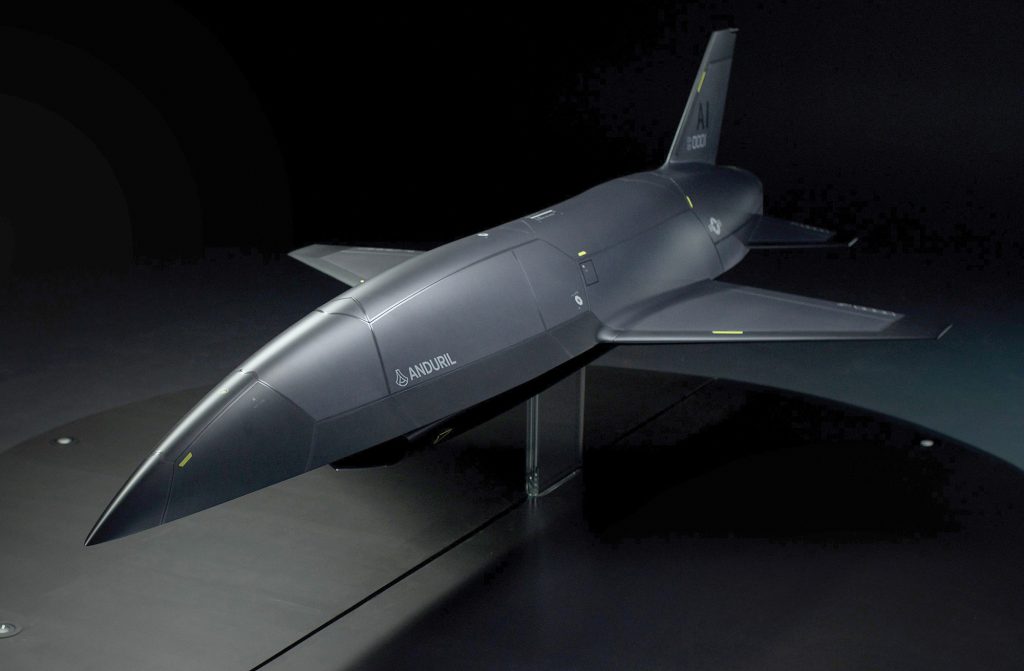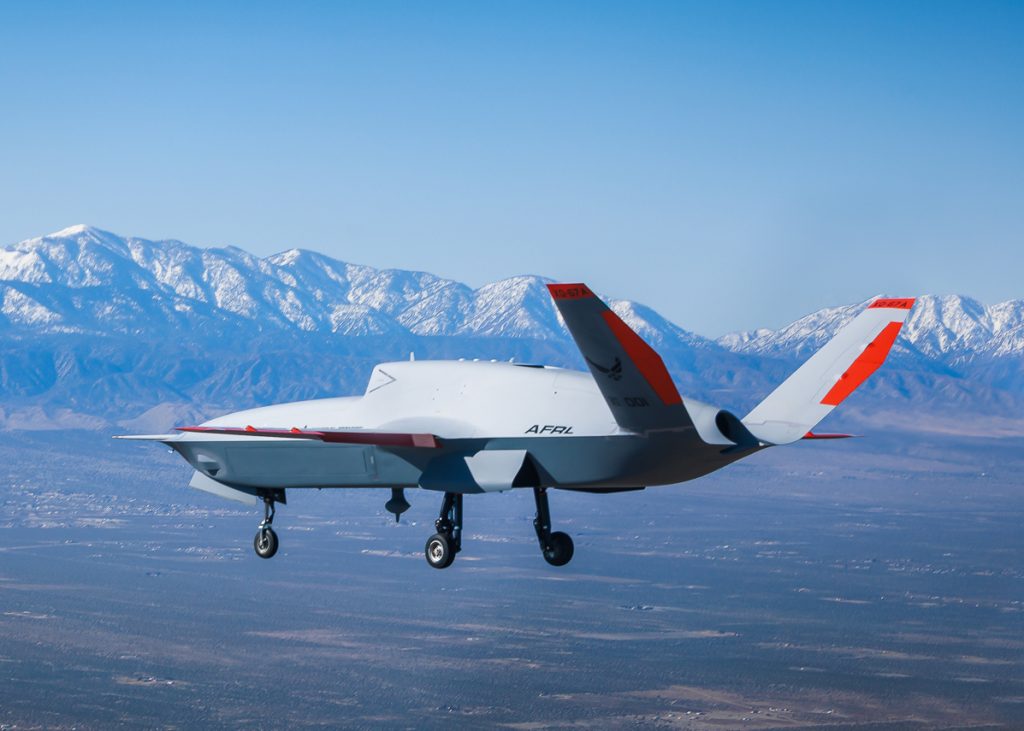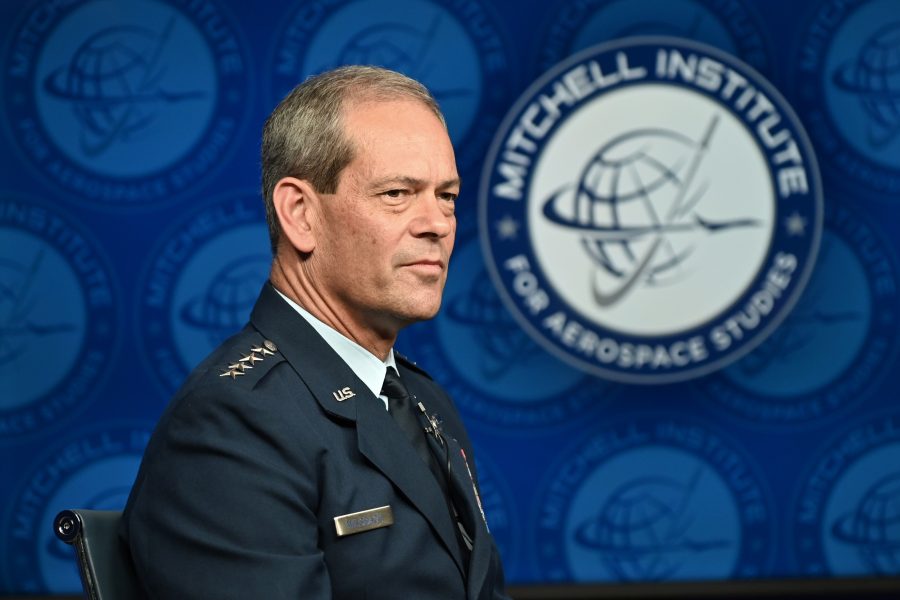With the Air Force’s fighter plans in flux—the Next-Generation Air Dominance program’s future in doubt and the F-22 potentially being extended—Collaborative Combat Aircraft autonomous drones will be all the more important for restoring capacity to the fleet, the head of Air Combat Command said July 10.
Speaking at the Mitchell Institute for Aerospace Studies, Gen. Kenneth S. Wilsbach emphasized the importance of CCAs and described how the service may train with them, even as he acknowledged he cannot quantify how many CCAs would equate to a single crewed aircraft.
“I wouldn’t say that it’s that linear,” Wilsbach said. “It’s a force multiplier.” Air Force officials have discussed anywhere from two to five CCAs each accompanying a manned fighter, expanding its ability to sense, complicating an adversary’s targeting, and taking hits for the crewed fighter fleet as necessary.
“I would say the better way to think about this is, what is the total capacity?” Wilsbach said. “And you know, the service has talked about potentially having as many as 1,000 of these CCAs to use in a contingency. And I think that’s a noble goal, and one that would create a lot of dilemmas as people think about getting into a fight with us and having to contend with that many, plus all of our manned platforms.”

The Air Force plans to field CCAs in the near future and build mass fast, and Wilsbach said he is “excited that we’re going to get Collaborative Combat Aircraft on ramps pretty quick … quicker than some of the manned platforms that we’ve experienced in the last few decades.”
More expensive than small, cheap, “attritable” drones but cheaper than manned fighters like the F-35 and F-15EX, CCAs will require new approaches for sustainment and operations, Wilsbach added.
The current thinking is that CCAs would be stored in a hangar, “ready to go,” but that only a handful would be used in training, saving on sustainment costs, Wilsbach said. They would not, however, be stored “in a box” like the MQ-9 Reaper or other, similar remotely-piloted aircraft of the last 25 years.
Crewed aircraft have to be flown “pretty regularly,” because crews need practice, Wilsbach explained, but an autonomous aircraft like the CCA doesn’t require proficiency sorties, other than its launch crew.
“You probably don’t need to fly that aircraft every day,” Wilsbach said. “And in fact, what we think is that we’ll have these aircraft available to fly, but they won’t fly that often. And the benefit of that is you don’t need the maintenance. You don’t need the long-term sustainment, and so you get a lot more airframes for a given amount of money.”

Without practice sorties and the accompanying maintenance, Wilsbach added, the Air Force can also expand the lifespan of CCAs.
They’ll be in “flyable storage,” Wilsbach said. “They’ll basically be in a hangar and they’ll be ready to fly” and will fly probably once a month.
“That’s going to save us a tremendous amount of money and sustainment and manpower, but still allow us to have a huge capability. If you think about having maybe as many as 1,000 more aircraft available to commit to a fight, that’s real power,” he said.
